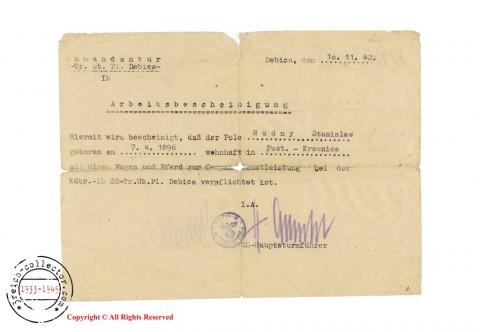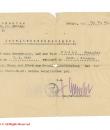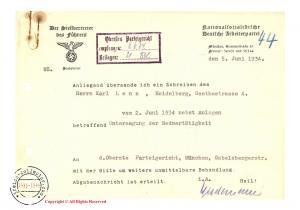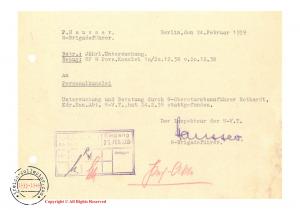Working Certificate Issued to a Pole Who Was Employed by Germans in SS Debica Training Camp
| Price: | $220.00 |
Working Certificate Issued to a Pole Who Was Employed by Germans in SS Debica Training Camp. It says that he was allowed to use a horse and a car. Issued in 1942. Truppenübungsplatzder Waffen-SS Debica "Heidelager" was created after the end of the occupation of Poland in September 1939 by the OKW regulation to build 7 training camps in this area. One of them was SS Truppenübungsplatz on the map referred to as SS Gutsbezirk Heidelager near the village of Pustkow. After 15 May 1940, SS Oberfuhrer Freicher von Schelle, who was appointed the first camp commander, arrived at the camp. From July 20, 1940, the Pustkow area fell exclusively under Waffen SS. In July 1940, the polygon documentation began, as well as the recruitment of workers for its construction, which was in charge of Arbeitamt. The camp was designed for Waffen SS , SS Totenkopf, and SCHUMA Police Forces . The camp was named after SS Truppenübungsplatz "Ostpolen" . In the autumn of 1941 the camp was renamed SS Truppenübungsplatz "Pustkow" , then SS Truppenübungsplatz "Heidelager" and eventually changed its name to SS Truppenübungsplatz "Ryde" . At the beginning of the camp there were two and then three independent bodies of the SS, namely the Kommandantur des SS Truppenübungsplatz , the SS Bauleitung - SS Zentralbauleitung, and the third was the SS Standortverwaltung. The camp was like a town in town. There were built houses for officers and camp civilians. They also had their own cinema and on Sunday the civilians were allowed to visit the camp. There were dozens of units in the camp as new recruits who were trained in small arms and mortars. At the end of the war, the Russians used the camp as an internment for German prisoners who drove to Russia. It is estimated that during the construction of the camp, 15,000 died. prisoners and 1,000 Russian soldiers fallen on liberation.








